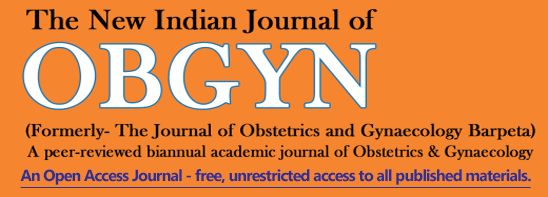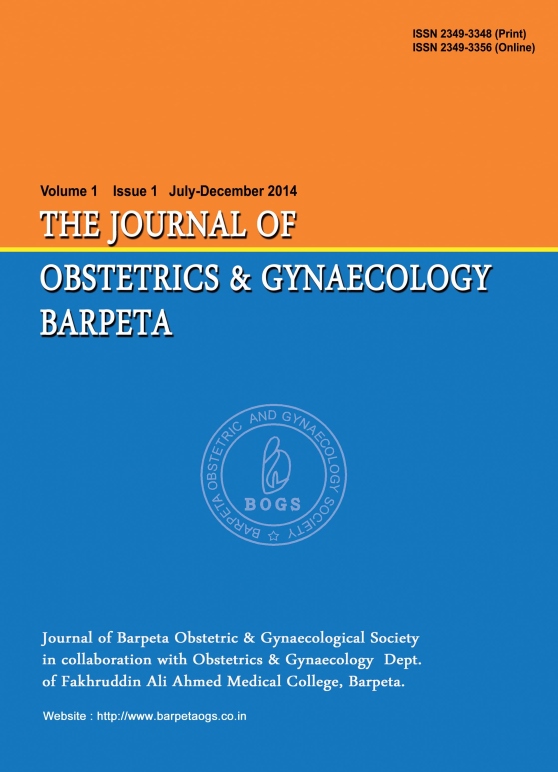
The New Indian Journal of OBGYN 5(2):103-106
Obstetric outcome in grand multipara – a Meghalaya experience
Indrani Roy, Ashish Burande, Richa Choubey
ABSTRACT
Objectives: This study was carried out to evaluate the obstetric and perinatal outcomes in grand multipara. Methods: A retrospective descriptive analytical study was carried out in the department of Obstetrics and Gynecology. All the case records of the grand multiparae (> gravida 5) admitted from 1st February 2016 to 28th February 2018 were observed for gravida, parity, age, religion, associated morbidities such as anaemia, pregnancy induced hypertension, gestational diabetes mellitus (GDM), obstetric complications such as post partum hemorrhage and rupture uterus, mode of delivery, neonatal outcome and maternal mortality. Results: Incidence of grand multiparity was 10.75% (571/5308). These 571 cases were from 3 groups: Group I – gravida 5 to 7 (358 = 62.69%), Group II – gravida 8 to 10 (158 = 27.67%) and group III – gravida > 10 (55 = 9.63%). In group I and III all mothers belonged to Christian religion whilst in Group II, 0.35% were from other religions also. In this study the highest gravida was 18 gravida. The range of age was 18 – 48 yrs (Mean age of 33.8 yrs). Incidence of significant anemia (Hb < 8 g/dl), in the three groups were 7.82%, 8.86% and 14.54% respectively. Incidence of pregnancy induced hypertension was 6.98%, 9.49% and 10.90% in the three groups respectively. Incidents of GDM were 1.22% in total with 1.39% in Group I and 1.26% in Group II. Two hundred thirty three (40.80%) deliveries were by lower segment caesarian section. Post partum hemorrhage occurred in 2.51%, 3.16% and 9.09% in group I, II and III respectively. Three patients had rupture of uterus (two belonging to group II and one in group I). There was no maternal mortality. Only 35(6.12%) deliveries resulted in perinatal deaths of which 4.37% (25) were still births. There were no congenital anomalies in the babies. Conclusion: Owing to unique social and religious influences in the hill state of Meghalaya with predominantly tribal population, there is high incidence of grand multiparity. This study concludes that there is no significant increase in incidence of maternal morbidities and mortality with increasing parity in the women of Meghalaya.
Volume 1 Issue 2
Volume 2 Issue 1
Volume 2 Issue 2
Volume 3 Issue 1
Volume 3 Issue 2
Volume 4 Issue 1
Volume 4 Issue 2
Volume 5 Issue 1
Volume 5 Issue 2
Volume 6 Issue 1
Volume 6 Issue 2
Volume 7 Issue 1
Volume 7 Issue 2
Volume 8 Issue 1
Volume 8 Issue 2
Volume 9 Issue 1
Volume 9 Issue 2
Volume 10 Issue 1
Volume 10 Issue 2

